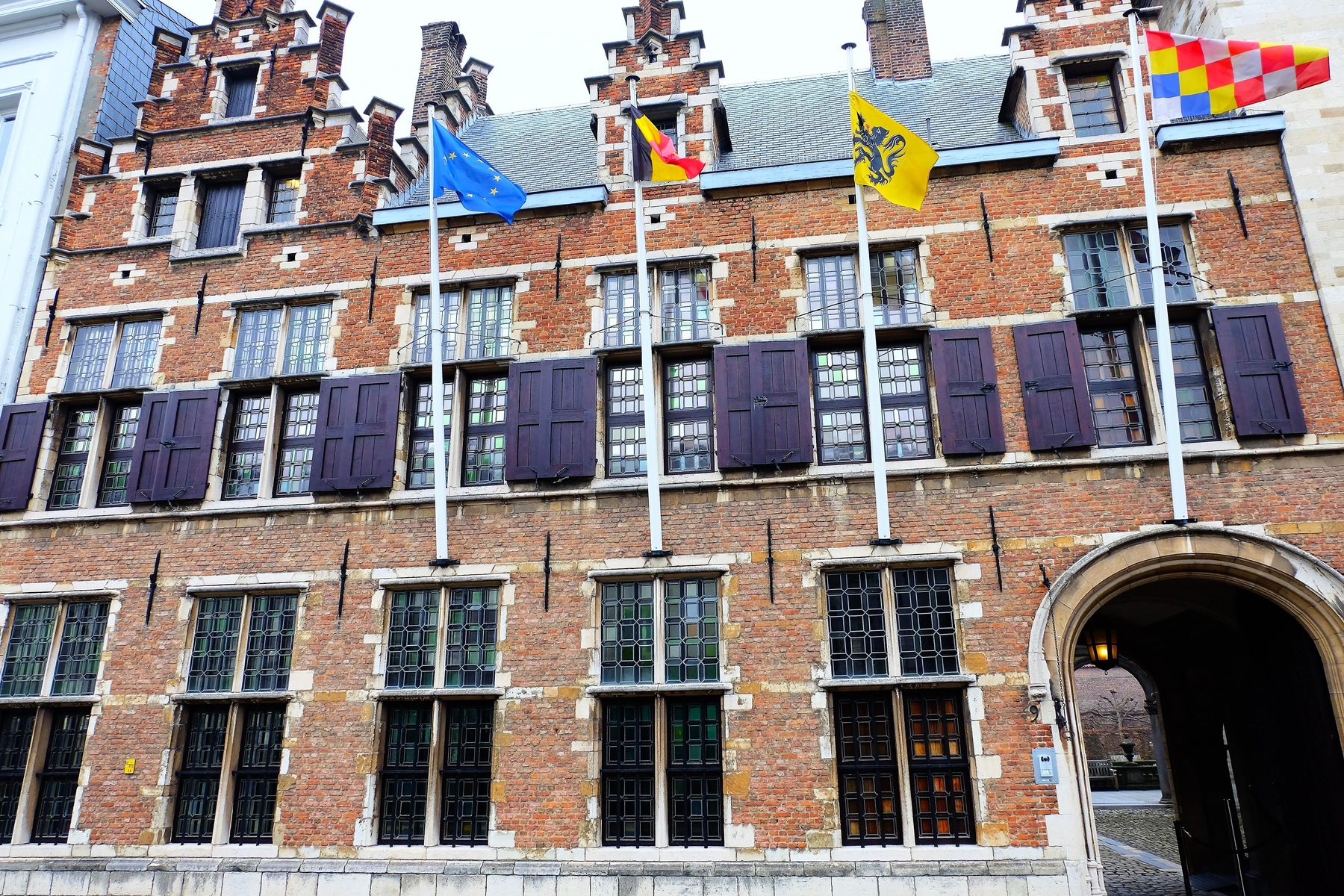Rubens House
The stately patrician house in the middle of the city centre was once the home and studio of the famous baroque painter Peter Paul Rubens. In addition to numerous of his own paintings and a remarkable private Rubens collection, the building itself and the garden are also worth seeing.

Rubenshuis - home and work of the baroque painter
Red brick, stepped gables, white sandstone and round-arched windows are just some of the features of this striking building on the Wapper, a square in the centre of Antwerp. In 1610, Peter Paul Rubens had purchased the house and rebuilt it according to his own plans. He was inspired by Italian Renaissance palazzi. The Flemish style has been preserved to this day.
Rubens lived in the house after the renovations until his death. It served as a home for him, his first wife Isabella Brant and his second wife Helene Fourment. His children also grew up in this house. At the same time, the painter, who was already famous during his lifetime, received important, even royal guests here, including Maria de Medici.
The studio next door was a hive of activity. Many of the painter's works were created here. At the height of his career, Rubens could no longer handle the commissions on his own and therefore employed other artists to work in his style. In the workshop, the employees produced around 2,500 panel and canvas paintings. In the master workshop on the first floor, on the other hand, the artist himself worked.
The Museum
The house remained in private hands until 1937, when it was acquired by the city of Antwerp. After restoration work, which was initially interrupted by the Second World War, the museum opened in 1946.
Today visitors can admire many works by Rubens and other masters of his time. These include one of his earliest works "Adam and Eve in Paradise" in the large studio and one of the most famous self-portraits. The work in the former pantry shows the artist at the age of about fifty.
The special attraction of the museum, however, lies in the fact that not only can Rubens' paintings be admired there, but the visitors find themselves in the place where he worked. The house as also the studio can be visited and one walks through the rooms in which the painter was at home, lived and worked. The rooms are furnished true to the original and many paintings from Rubens' private collection were already in the same place at his time.
The permanent exhibition shows the impressive collection of works by Rubens and his colleagues. It is regularly supplemented by interesting temporary exhibitions devoted to Flemish painting and the Baroque period.
Magnificent Renaissance garden
The garden is also worth a look: although it was only laid out in 1993 and 2001, it is a magnificent Renaissance garden. Since its exact appearance has not been handed down, the garden was created without reliable historical sources. However, Ruben's painting "Walk in the Garden" served as a model. The garden was a great playground for Rubens' children and today, as in the past, it is an oasis of peace in the middle of the city centre.
The splendour of the garden is the pavilion, which Rubens himself designed and which is still preserved in this form today. The archway has also been preserved according to Rubens' designs. This imposing work connects the residence with the studio and offers a beautiful view of the garden. It is occupied by two Roman deities: Mercury, the god of painters and Minerva, the goddess of wisdom.
Peter Paul Rubens - Master of Baroque Painting
Rubens was born in 1577 in Siegen, which at that time belonged to the House of Nassau. The prestigious Antwerp patrician family was in exile there due to religious persecution. At the age of ten he returned to Antwerp with his mother after the death of his father. After graduating from Latin school, Rubens devoted himself to art and trained as a painter. After spending several years in Italy, he returned to Antwerp, became a court painter, and quickly rose to become a respected painter who received many commissions from the upper classes. Except for a few sojourns abroad, Rubens spent his life in Antwerp. In 1640 he died of gout in his residence.
Tickets and prices
Tickets can be purchased online or at the ticket office. Tickets are booked for a specific block of time. Admission corresponds to the booked time. The time blocks start every half hour from 10 am.- Adults (from 26 years) 8€
- Reduction 6€
- Persons from 12 to 26 years old,
- persons older than 65 years
- children up to 12 years,
- Accompanying persons with disabilities
- Visitors with valid Antwerp City Card
Wegbeschreibung
The museum is centrally located in the city center and is easily accessible by various streetcar lines, but also on foot from the main train station.- Train: to Antwerp Centraal, from there 12 minutes walk.
- Streetcar: the nearest stop is the Meir stop. Lines 3, 5, 9, and 15 stop there, and from there it is a 5-minute walk to the museum.
- Line 4 and 7 to Oudaan. From there also 5 minutes walk.
- Line 2, 6, 12 and 24 to Centraal Station/Astrid. From there 12 minutes walk.
- Line 1 and 10 to Opera. Also 12 minutes walk.
- Bus: Line 13 and 14 also to Opera stop. From there 8 minutes walk.